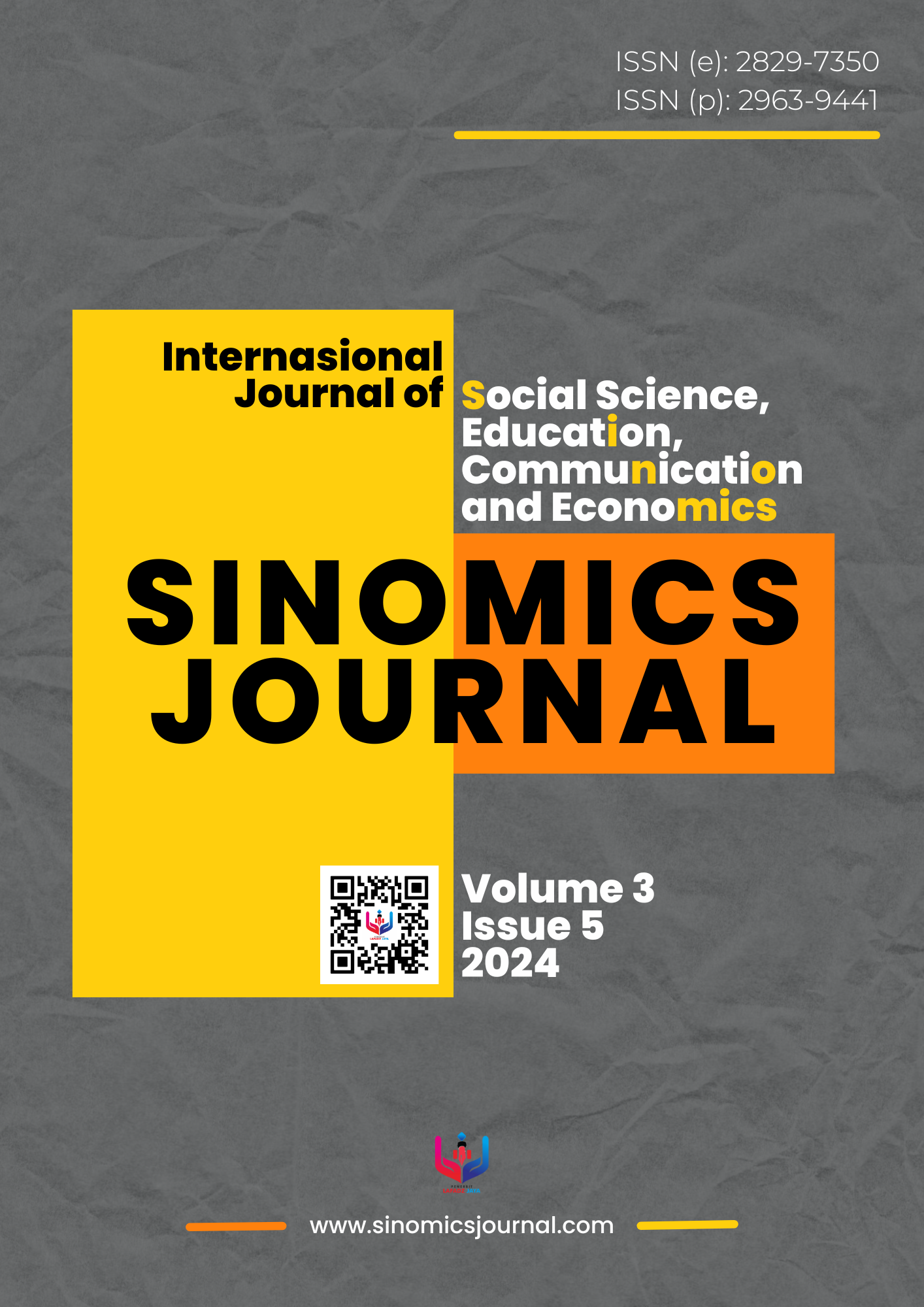Effectiveness of Public Open Spaces for Residents in Gated Communities: Case Study of Citra Wisata Medan Johor
DOI:
https://doi.org/10.54443/sj.v3i5.441Keywords:
effectiveness, public open space, gated community housingAbstract
The number of gated community housing is increasing and becoming a popular option in urban areas because of the security and privacy. Public open spaces in housing areas have a crucial role in improving environmental quality and the welfare of residents and the surrounding community. Therefore, this study will analyze the quality and test the effectiveness of Public Open Space research in Gated Community, Case Study of Citra Wisata Medan Johor. This study uses a qualitative approach with 5 variables used, namely; security, comfort, achievement, livability, and image. This study will be conducted for 1 month using 2 data collection methods, namely primary data (Observation and Questionnaire) and secondary data (Literature study). The results of this study are expected to contribute to the field of science, housing developers, housing residents, and the government in terms of the use and benefits of public open spaces in gated community housing.
Downloads
References
Biddulph, M. 2007. Introduction to Residential Layout. Oxford: Elsevier Limited.
Blakely, E.J. & Snyder, M.G. (1998). Separate places: Crime and security in gated communities. In: M. Felson and R.B. Peiser (eds.), Reducing crime through real estate development and management. Washington, D.C.: Urban Land Institute.
Detuage, I. R., Radja, A. M., & Wikantari R, R. (2019). Evaluasi Efektifitas Pemanfaatan Taman Maccini Sombala SeBagai Ruang Terbuka Publik Menurut Kebutuhan Masyarakat. Nature: National Academic Journal of Architecture, 6(2), 194.
Erni, Y. (2024). Efektivitas Ruang Terbuka Publik Di Kecamatan Purwodadi Kabupaten Grobogan. Universitas Semarang.
Felson, M. (2002). Crime and everyday life (3rd ed.). Pine Forge Press.
Hasanuddin, W. H., Wunas, S., & Asmal, I. (2019). Efektivitas Ruang Terbuka Publik pada Klaster Perumahan Komunitas Berpagar (Perumahan Bukit Baruga Kota Makassar). Jurnal Penelitian Enjiniring, 23(1), 66–73.
Husein, Umar. 2004. Metode Penelitian untuk Skripsi dan Tesis Bisnis. Cet ke 6. Jakarta : PT. Raja Grafindo Persada
Hwang, HH. Kim, YO. dan Shin, HW. 2009. The Efficient Use of Private on Open Space through a Correlation Analysis between Space Type and Street - Focusing on Local St. at Yoido Capital St. Stockholm: Proceedings of the 7th International Space Syntax Symposium.
Ika, M. C., Ibnu Sasongko, & Agung Witjaksono. (2018). 1224006_Mutiara. Chandrawati.Ika_JURNAL_TA. Institut Teknologi Nasional Malang Repository, 1–10.
Jeffery, C. R. (1971). Crime prevention through environmental design. Sage Publications
Madanipour, A, 1996, Design of Urban Space, an inquiry into socio – spatial process, Wiley, New York.
Nazilah, S., & Ramdhan, F. S. (2021). Augmented Reality Sebagai Media Pembelajaran Untuk Pengenalan Landmark Negara-Negara ASEAN Berbasis Android Dengan Menggunakan Metode Marker Based Tracking. Ikra-Ith Informatika, 5(2), 99–107.
Paningkat, G. K., & Khadiyanto, P. (2019). Persepsi Pengunjung Terhadap Tingkat Kenyamanan Alun-Alun Kabupaten Pemalang. Ruang, 5(2), 140.
Porajouw, E. F., Faizah Mastutie, dan, & Faizah Mastutie, S. (2017). Efektivitas Ruang Terbuka Publik di Kota Tomohon.
Scruton, Roger. 1984. Public space and The Classical Vernacular. Singapore: The. Publik Interest.
Siregar, M. H., & Tanjung, M. (2024). Breaking Up Communication Barriers: Identifying and Overcoming Verbal Communication Barriers in the Completion of Final Projects for Communication Science Students at the State Islamic University of North Sumatra. International Journal of Social Science, Education, Communication and Economics (Sinomics Journal), 3(3), 751–766. https://doi.org/10.54443/sj.v3i3.345
Sugiyono. (2016). Metode Penelitian Kuantitatif, Kualitatif dan R&D, Cetakan ke-24. Bandung: Alfabeta.
Suminar, L., & Sari, P. A. (2021). Pola Penggunaan Ruang Terbuka Publik di Kawasan Wisata Malioboro Pada Masa Pandemi. Jurnal Ilmiah Pariwisata, 26(1), 23–32.
Suyono, B., & Prianto, E. (2018). Kajian Sensasi Kenyamanan Termal Dan Konsumsi Energi Di Taman Srigunting Kota Lama Semarang. Modul, 18(1), 18. https://doi.org/10.14710/mdl.18.1.2018.18-25
Towers, G. 2005. An Introduction to Urban Housing Design: at Home in the City. Oxford: Architectural Press an imprint of Elsevier.
Tuan, Y. F. (1977). Space and Place: The Perspective of Experience. Minneapolis, MN: University of Minnesota Press.
Umar, Husein. 2004. Metode Riset Ilmu. Jakarta: PT Raja Grafindo Persada
Woolley, Helen. 2003. Urban Open Spaces, New York: Spon Press.
Zhou, Y. 2006. Public Spaces in Beijing´s Residential Areas. Stuttgart: StädtebauInstitut Universität Stuttgart Lehrstuhl Städtebau und Entwerfen.
Downloads
Published
How to Cite
License
Copyright (c) 2024 Hery Samuel Simarmata, Dwira Nirfalini Aulia, Hilma Tamiami Fachrudin

This work is licensed under a Creative Commons Attribution 4.0 International License.























